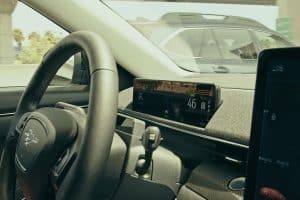Tesla’s Supercharger network is substantially more reliable than its competitors in the market today. This was according to J.D. Power’s recent E-Vision Intelligence Report.
During the first quarter of 2023, around 21.6% of EV drivers who visited non-Tesla public charging stalls found that they were unable to charge their electric vehicles. In comparison, only 3.9% of Tesla drivers using the Tesla Supercharger network reported similar issues.
“When it comes to reliability, no other provider is even close to Tesla,” J.D. Power’s report noted.
The J.D. Power study noted Tesla vehicle owners reported the highest public charging satisfaction. On a 1,000-point scale, Tesla scored 734, while the average for all other manufacturers was 558 points. Tesla’s 19,500-strong Supercharger network is the largest EV charging network in the US as well, as networks using the Combined Charging System have about 11,500 fast chargers.
“Tesla simply has the largest and most reliable fast-charging network,” the J.D. Power report said.
The Tesla Supercharger network’s high scores in J.D. Power’s E-Vision Intelligence Report come as no surprise, as the electric vehicle maker has extensive experience with rapid charging systems. This is perhaps one of the key reasons why Tesla’s North American Charging Standard (NACS) is steadily gaining traction in the United States today.
Tesla’s NACS is gaining so much momentum that it is likely on track to become an industry standard in North America, as noted in an Automotive News report. Ford, General Motors, Rivian, and Volvo have reached agreements to adopt Tesla’s North American Charging Standard on their EVs over the next several years. Stellantis and Hyundai are considering similar deals.
SAE International also announced that it would be supporting the standardization of Tesla’s NACS by developing manufacturing, performance, and reliability standards for the system. The initiative is expected to be implemented on an expedited timeline.
J.D. Power, for its part, noted that the Supercharger network benefits from being more vertically integrated than its competitors. Elizabeth Krear, J.D. Power’s vice president for EV practice, described this advantage. “This enables Tesla to control and test the compatibility between the vehicle hardware and software and the Supercharger hardware and software,” she said.
In comparison, nonproprietary EV charging networks are horizontally integrated, relying on coordination and maintenance by several stakeholders. As a result, they must work with “a variety of vehicles that all have evolving software updates — all adding complexity for non-Tesla charging,” Krear said.
“Lack of public charging infrastructure has been the top consumer barrier to EV adoption for the past 12 months, followed by related issues involving range anxiety, time required to charge, and inability to charge at home or work. If the Tesla user experience can be replicated for the non-Tesla EV users, then adoption of NACS by non-Tesla manufacturers could improve the overall charging experience and reliability,” Krear noted.





